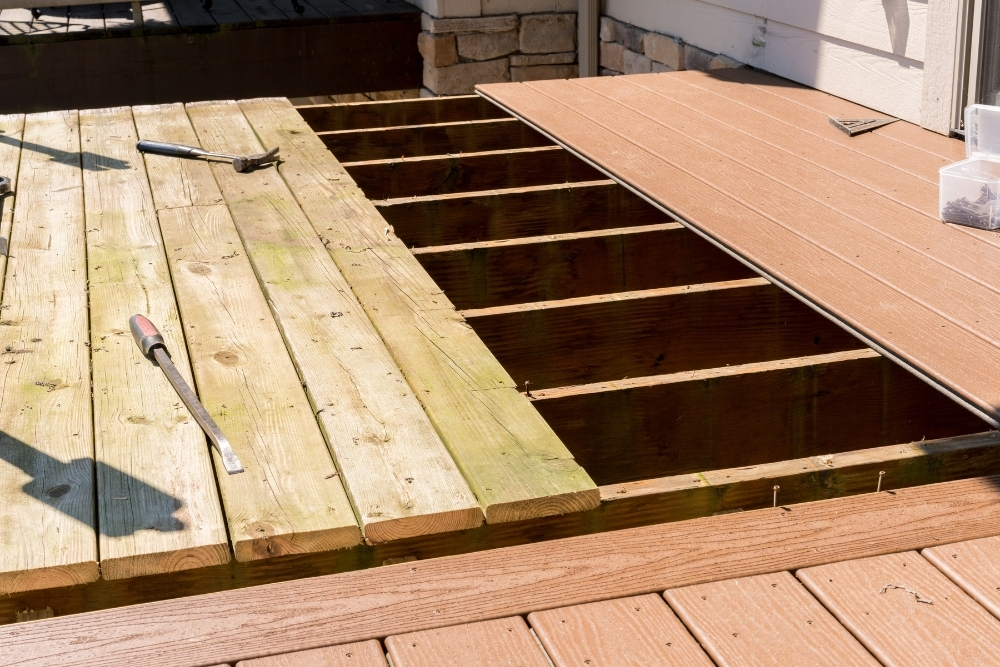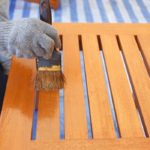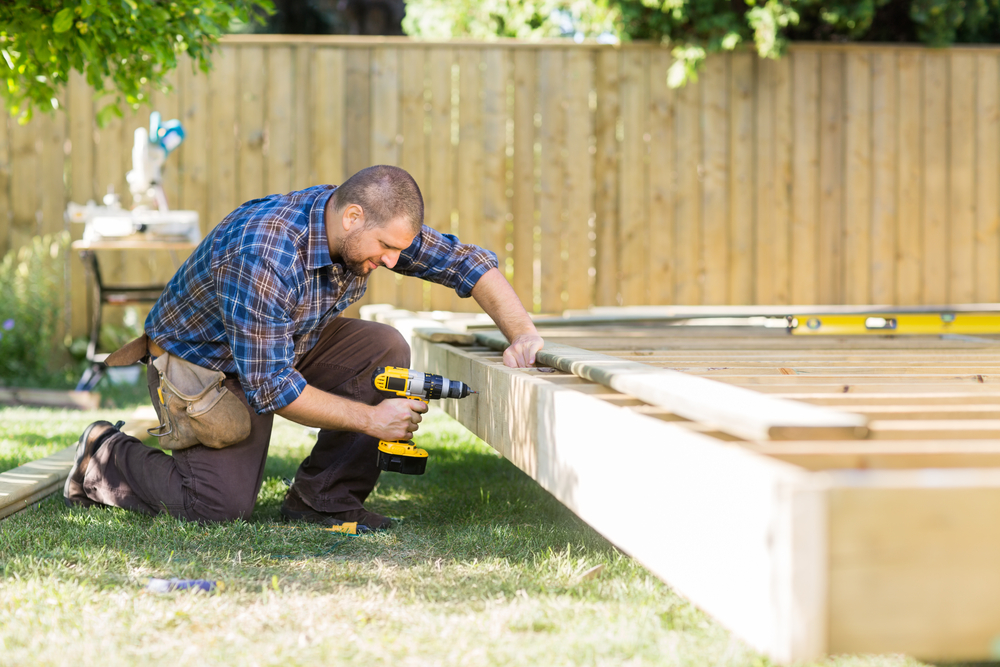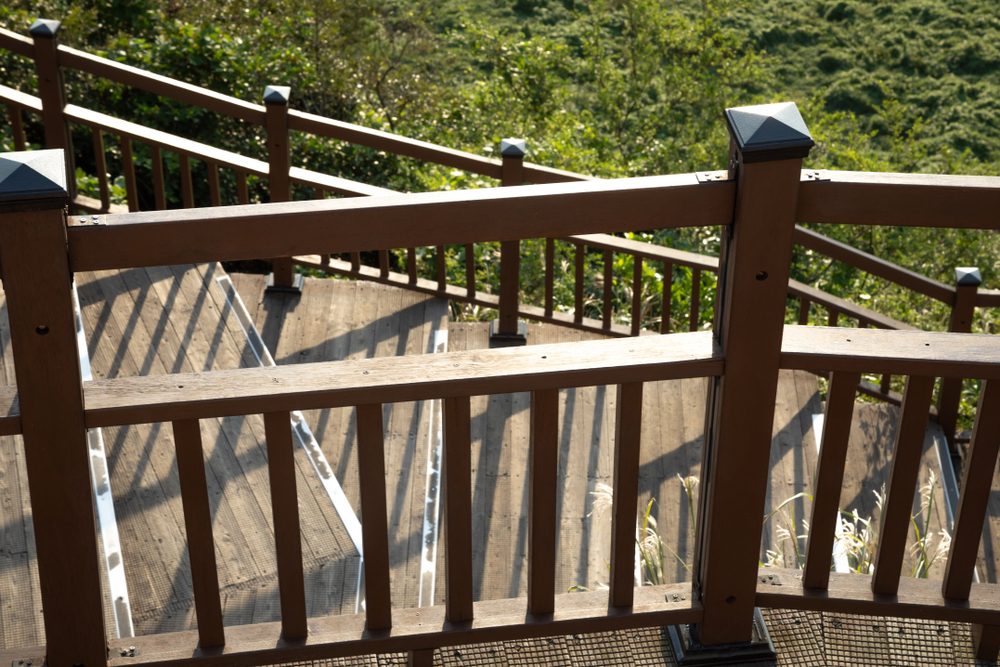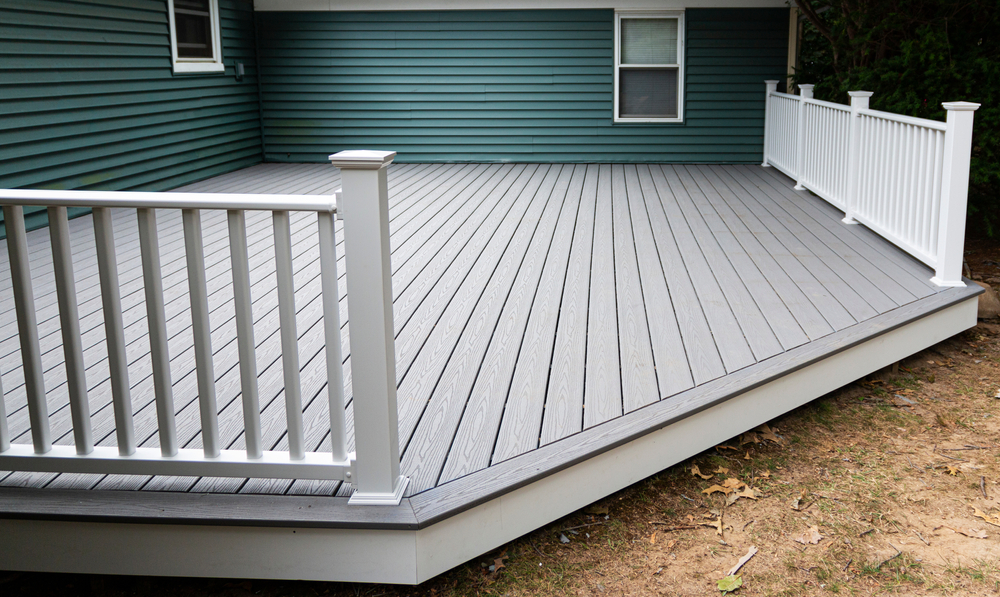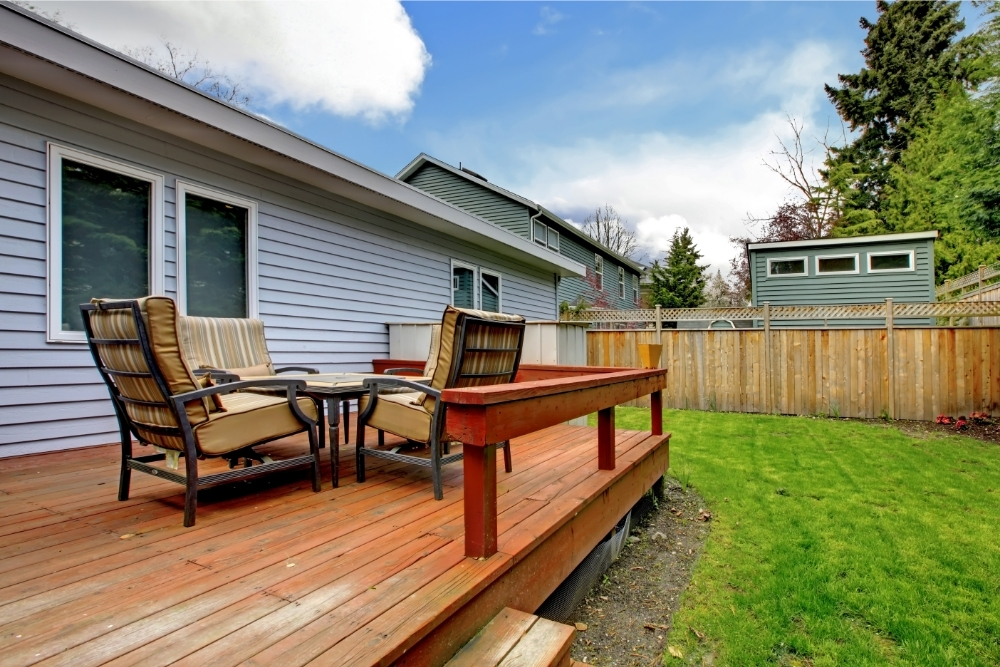After a long hot summer of use, and a damp winter being overlooked, decks can start to look worse for wear. Paint fades and peels, marks get walked over and worn in, and there can be a general air of sadness to the whole structure. Sometimes, a lick of paint is necessary to brighten the whole thing up.
Unless it’s rotting through, no deck is past saving. All it needs is a refresh! A new layer of paint can make a tired deck seem welcoming and fun. If only it didn’t take so long to get all that old paint off.
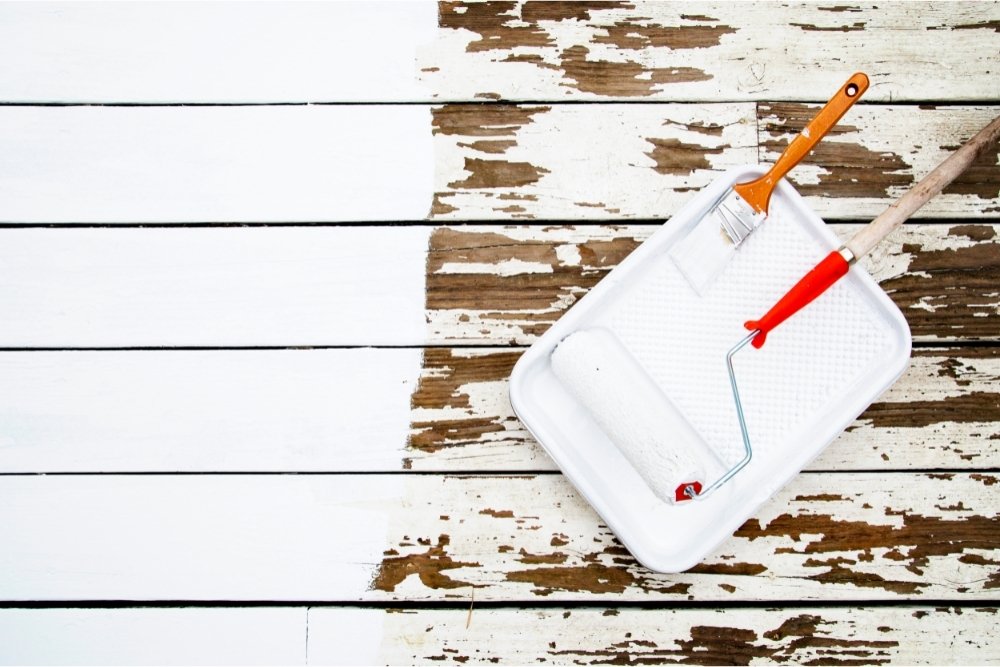
If you’re dreaming of painting your deck, but put off by a long and messy stripping process, there is a solution. Painting an existing deck doesn’t have to be a difficult job. In this guide, we give you some tips for how to get your deck looking brand new, in no time at all.
How do you repaint a deck without stripping?
Decks should get a lot of use. They’re the best place for enjoying the sunshine, hanging out with friends, or sitting back with a bottle of beer and the setting sun.
But in order to enjoy a deck, we actually have to use them. Constant foot traffic and heavy furniture can leave a deck looking worn down, even when the wood is still high quality.
Repainting a deck without stripping is actually a simple process. The new layer of paint will stick to the worn away coats, and can give a durable and attractive finish. You don’t need any special tools to do it, but you do require some patience:
- Scrub the deck clean. And we mean, really scrub it. You want to get into all those cracks and crevices that tend to gather dirt. This needs to be done, and it needs to be done well, or it will ruin the finish of the paint. Use either a specially formulated deck cleaner, or hot water and dish soap. Don’t neglect this step. Trying to paint over a dirty deck will just mean you’ll have to start the whole process again in a few weeks time.
- Power wash. Use a hose or a jet washer to really blast it clean. This should remove any of the old dirt lying around, and wash away the last of the cleaning solution. Leave the deck to dry. It’s best to do this on a warm day.
- Inspect the deck. Once the deck is dry, you want to take a close look at the condition. Best case scenario: your newly cleaned deck seems as good as new anyway. However, you may have found the washing has revealed areas of peeling paint. These need to be scraped away and removed.
- Sand. Sanding down is not about removing the paint or stain, it’s simply about creating a surface to paint on to. 150-grit sandpaper is a good choice. If you have a sheet sander, use it to make the job go faster. Otherwise, purchase a sandpaper brick, which is easier on the hands.
- Wipe the deck. Once you’ve finished sanding, there’s going to be grit left about. This needs to be wiped away using a tack cloth, or the paint won’t stick properly.
- Test the paint on the underside of the wood, or a covered area. This both allows you to check the color, and ensure the paint is sticking.
- Apply the first layer of paint. It’s better to use thin layers and build up, rather than using a thick coat of paint. Thin layers bond together well, and they build up to give a lasting finish. It’s also easier to achieve an even coating with multiple thin layers, and you don’t have to wait ages for them to dry.
- Wait 4 to 6 hours for the first layer to dry completely. As you wait for it to dry, inspect the deck for issues. Sand down or wipe away any areas where the paint has formed bubbles, or lumps.
- Apply a second coat, and repeat the process. You may find it takes 3 to 4 layers to get the finish you desire.
- Once you’re happy with the effect, apply a sealant. These can be painted on or sprayed. Sealant ensures your new, fresh paint will look better for longer.
Painting over deck stain
Painting over deck stain is similar to covering paint, and it doesn’t require you to strip the wood. There are only a few areas where you need to take extra care.
- Sanding. It’s especially important to sand if you want to apply paint on top of staining. Otherwise, you risk the paint not being able to stick properly to the wood.
- Primer. If you’ve sanded down the stain, there’s a chance you won’t need to use primer. However, a coat of oil-based primer can help with the longevity and overall finish. It’s perhaps slightly more necessary if you’re applying on top of stain, but it can also be used over an old layer of paint. If you are using a primer, the sanding isn’t as necessary.
- Use the correct materials. Oil-based paints and oil-based primers tend to protect the wood surface better than water-based varieties.
Painting over stained wood is a quick way to bring new life to an old deck.
Can you stain over a painted deck?
Painting over stain is fairly easy, and only requires a small amount of prep work. However, if you want to do it the other way around, be prepared for a lot more effort. It’s impossible to stain over paint without fully stripping the paint, which can be a long and messy task.
Final Thoughts
It is possible to repaint a deck without stripping, and the results can be quite impressive. The most important thing is to exercise patience. Fully clean the deck, remove any peeling paint, and wait for each coat to dry fully. Putting in the effort now means you won’t need to repeat the whole process in a few months time.

